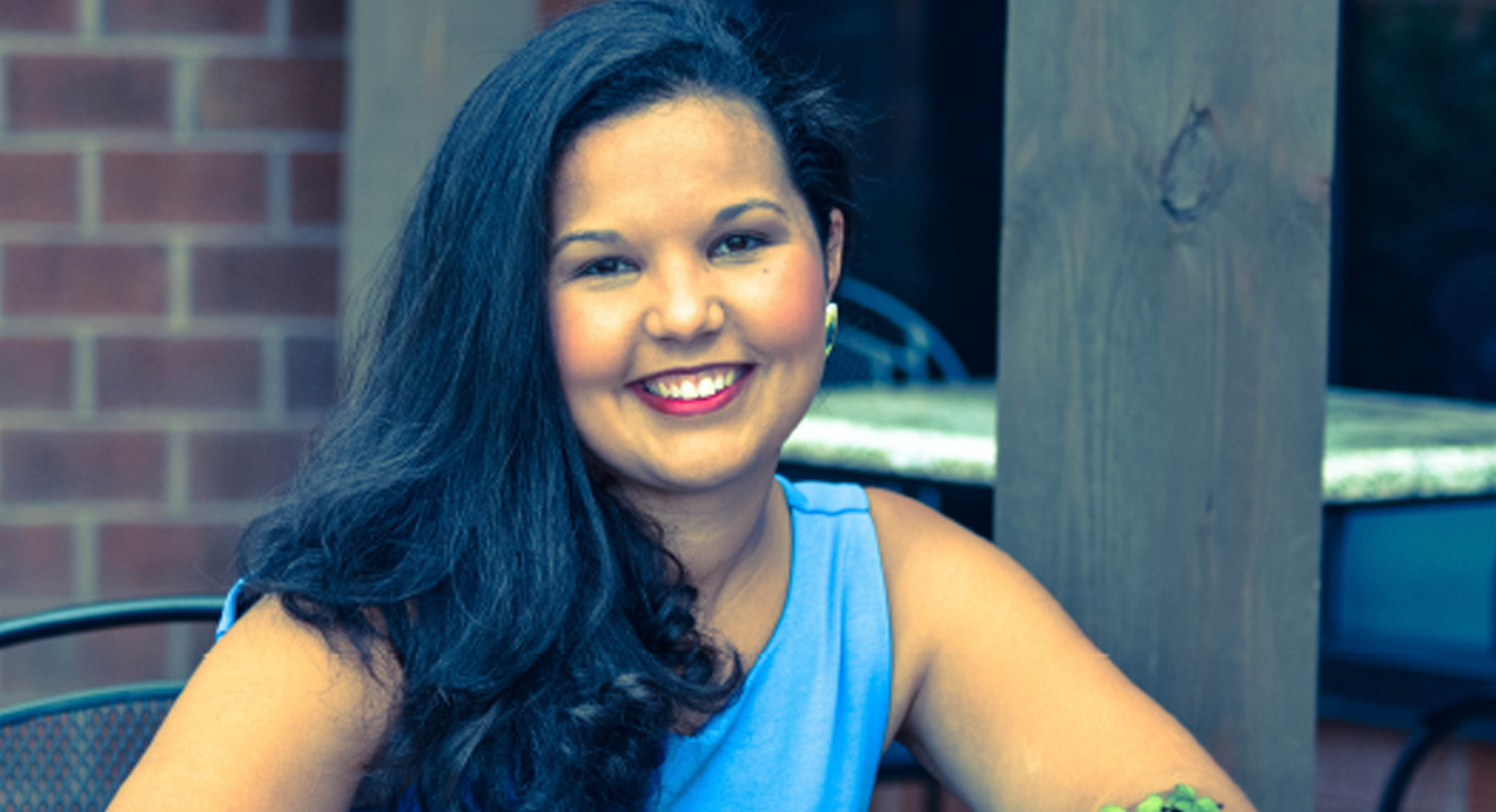Keeping Traditions While Living The American Dream
- Substantial's been telling stories since early 2012. Here's one from the archives.

Aleshia Hunt is of Native American descent born in Eastern North Carolina and received her Bachelor’s degree in Cultural Anthropology from East Carolina University. In a candid interview with Substantial, Magazine Aleshia discusses Native American traditions and the American Dream.
Most often it feels as though individuals fail to realize that Native American culture is alive and well. More to the point, Native Americans are not the individuals seen in western movies, with long straight hair always wearing regalia and unable to clearly articulate the English language. The Lumbee Tribe of North Carolina is the largest tribe east of the Mississippi with over 55,000 enrolled members. North Carolina has the highest population of Native American/American Indians on the East coast. Compared to the United States North Carolina ranks 9th in its Native American population. There are 8 state-recognized tribes (1 federally recognized tribe), and 4 tribal associations. North Carolina is also home of the first Native American fraternity, Epsilon Chi-Nu Fraternity, Incorporated and the 2nd Native American sorority in the Nation, Sigma Omicron Epsilon Sorority, Incorporated. Nevertheless, it sometimes feels like we are the forgotten people. I find this to be especially true in the education arena.
SM: What is your Native American heritage (tribal affiliation)?
Aleshia: I am from the Lumbee tribe of North Carolina. Our tribal home is in Robeson County. We are the largest tribe East of the Mississippi with over 55,000 enrolled members. We have members located in Robeson, Scotland, Hoke, and Sampson Counties. We have an annual spring powwow in May and fall powwow in October. Our tribal homecoming is always the week of July 4 with many activities – 5k, parade, car show, pageants for little Miss Lumbee to Senior Miss Lumbee and ends with parade and fireworks. All are always welcome to come.
SM: How do you incorporate Native American customers and traditions into western life?
Aleshia: I am proud of my Native American heritage. As a child I was taught the tradition of my culture; as an adult, I have made it a point to learn as much as I can about the Lumbee tribe. I participate in various Native American activities; make crafts associated with my tribe; I also enjoy preparing Native American dishes. I am proud of my Native American heritage and I teach my son the importance of keeping our traditions and I make sure he understands the meaning behind our traditions.
SM: What is one of the Native American customs important to your culture?
Aleshia: Remaining close to family. Families are the keeper of our stories and traditions. Our families teach us how to cook, dance, sew, bead, pray, and even our language and many other things. Our families bring us in the circle when we dance. Native Americans have high regard for their family.
SM: When you hear the term “American Dream” what comes to mind (what does it mean to you)?

Aleshia: WOW, there is no short answer to this one. To me, the “American Dream” is a set of ideals in which freedom includes the opportunity for prosperity and success and includes an upward social mobility achieved through hard work. Personally, I want to make the world better for my children and future grandchildren. For me success is not about money or status it’s about the people you help achieve their goals, as you journey toward your own.
Achieving the “American Dream” is a process that cannot be completed without lending yourself to the needs of others. I learned this from my maternal great grandmother, the daughter of a sharecropper with a 1st-grade education, didn’t have much but she always shared with others not expecting anything in return. Other lessons of success came from my paternal grandmother, owner of a restaurant, who allowed her patrons to enjoy a meal even though they had no money to pay. It was the actions of these women who taught me that there are three things that make up the foundation of living the “American Dream”; willingly share what you have with others; help others move upward – it is important to think on others more so than yourself, and to always pray to the creator and to love.
SM: As a Native American woman what has been your biggest challenge when attempting to move forward in your career?
Aleshia: The most difficult challenge has been moving from one level to the next in my career. I have always believed that hard work would be rewarded – would contribute to moving upward. However, it seems that hard work doesn’t always move you forward. Unfortunately, doing a good job in one area of your career path can cause others to be blinded to the whole of your skill sets; you are identified by your current position and not thought of in any other capacity. When others think of you in only one way, it makes it extremely difficult to advance. I continue to hope that my experience, dedication to do doing a good job, as well as my education will speak for me.
SM: Do you think there are enough Native Americans in business, education, or as entrepreneurs?
Aleshia: In my home community we have Native American businesses and entrepreneurs as well as educators. However, across the country, I believe we are lacking in those areas. It appears that Native American businesses and entrepreneurship is only represented in the community pockets they represent. Given current drop out rates of Native Americans, there should be a greater representation of Native Americans in the school systems, including higher education.
SM: What do you see as some of the barriers hindering Native Americans from achieving the “American Dream”?
Aleshia: One of the major barriers is education. The cost of education is becoming out of reach for so many. Grants and scholarships are not enough and too often working more than one job is required to in order to pay for one’s education. Attaining a degree, at any level, should be encouraged regardless of ethnicity, but putting the cost out of reach makes education a rich man’s luxury.
SM: According to Diplomas Count 2013, an annual report released by Education Week, the Native American drop out rate is increasing. What would you recommend to increase the graduation rate of Native Americans?
Aleshia: Currently in North Carolina, through the Commission of Indian Affairs, we have Youth Development Specialist (YDS) officers. These positions are paid for thru federal funding given to the state. YDS staff members have to focus on several schools instead of one school. It would be helpful if YDS officers could focus on one school. The impact YDS officers have on the Native American community is invaluable. They serve as a wonderful counselor and recommend grants and colleges to attend. They are also a wonderful resource for and mentor to Native American students during the entire academic journey.
SM: What steps would you take to educate people about Native American culture?
Aleshia: It amazes me that so many people have questions about reservations and why we don’t look like what they see on westerns (straight hair, wearing regalia, etc.). People always ask if we still live in teepees. So the first thing I would do is to educate people about my tribe and our customs – discuss NC tribal facts and national facts. I would also dispel any stereotypes and myths about Native Americans. Ideally, I would like an audience with those who write textbooks. My wish is that the educational system would move away from using western tribes as their only point of reference. Native Americans are all over the United States. Thee are populations throughout with traditions, languages, and customs still thriving.
SM: What keeps you grounded?
Aleshia: I love to run. Running is my pause from reality, my true time out. While running I can clearly think about the events of the day, pray, listen to music, and enjoy what is going on in the world around me – the beauty of nature, the flowers, the sky over me. We are all in such a rush that the goodness of life can sometimes be missed. In the miles I run I am reminded of my favorite quote by Samuel Taylor Coleridge “And in today already walks tomorrow.” It is during this time I remember that what we do now reflects the next generation.

“I am proud of my Native American heritage. As a child I was taught the tradition of my cultural; as an adult I have made it a point to learn as much as I can about the Lumbee tribe.”
Interview and Photography by Angela Marshall



